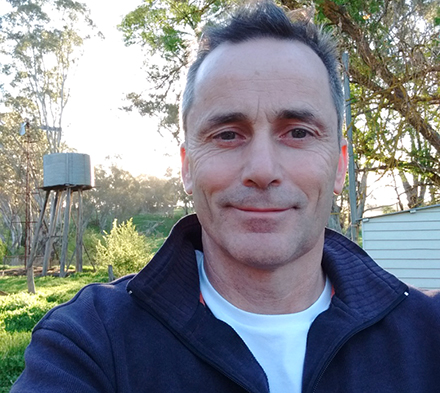National Park declaration is easy – real management needs long-term thinking, people and budgets.
The Victorian Government’s long-deferred decision to announce more National Parks in the West of Victoria last week dodges the real challenges of managing and conserving these forests. The Mt Cole – Pyrenees, Wombat, and Wellsford forests have all been re-assigned after an investigation by the Victorian Environmental Assessment Council (VEAC) completed in June 2019.
Declaring National Parks is easy, but managing them – to maintain biodiversity, mitigate catastrophic fire and ensure that visitors respect them – is not. Western Victoria’s forests need a new vision that includes more holistic, integrated approaches based on active and adaptive management that is informed by science, practical experience and traditional ecological knowledge.
The shift to National or other types of park will not, in itself, reduce threats to biodiversity like feral animals, weeds, diseases or climate change. To genuinely support conservation, the Victorian Government needs to substantially increase base funding of Parks Victoria to ensure that staff have the resources to manage these new areas, not simply invest in capital works like visitor management facilities and walking tracks. Great work is currently being done by community groups and organisations who volunteer and fundraise to support our parks, but we can’t rely solely on their endeavours.
Leadership of Traditional Owners in managing these forests is vital. Traditional Owners have a deep understanding of country and how it can be better managed, particularly through use of cultural burning and other forms of cultural lore. Funding is required to develop the skills of all future forest managers to interpret forests and share knowledge through management experience, like past generations of foresters.
European experience of these forests started with gold mining. The first foresters and rangers (then called bailiffs) contended with wanton destruction as miners took what they needed without thought for the future. Early foresters such as John La Gerche combatted illegal logging from 1882, fronting the miners in the early dawn, having slept in the forest so that he could hear the sounds of the axes. The first conservator of forests, George Perrin, initiated forest management and further protection of the public land estate. While land tenure has continued to change after assessments such as those commissioned by VEAC’s predecessor the Land Conservation Council, the need for sound forest management and stewardship has not.
Creating parks potentially removes management options, to reduce fire risk, improve habitat and produce firewood, an important heating source for many local people. It is therefore appropriate that a phased transition of land tenure occurs over several years to ensure that genuine strategy, long-term planning and resourcing is developed to support active and adaptive management to meet community and conservation needs.
La Gerche was amongst the first to recognise the importance of thinning forest regrowth as an active management approach after mining, and in 1887 he conducted an experiment to remove crooked trees from 100 acres and retain the healthy straight saplings. In 2010, Parks Victoria repeated this work, showing the benefits of thinning for habitat for native animals and plant diversity. This work was discontinued due to lack of resources and political commitment.
These forests need ongoing, judicious management to create the complexity that wildlife need and to ensure people who live in and near the forest and in nearby towns are protected from wildfire. Thinning (mainly for firewood) or single tree selection (sawlogs, posts and firewood), combined with stringent prescriptions for habitat tree retention, is very low impact harvesting. It maintains a canopy cover and increases the structural diversity and niches for different animals and birds.
VEAC recommended a program of active ecological restoration, including thinning, but in their response the government has given only lukewarm support and committed no resources. In these vegetation types, shifting to passive conservation management is likely to increase bushfire threats and miss the opportunity for active management to improve and maintain their conservation value.
Running through the Wellsford forest north-east of Bendigo is an experience that hundreds of orienteers regularly enjoy. You see folds of grey box and rises of majestic ironbarks, the versatile yellow gum blending them together, its flowers providing an important source of winter nectar for many birds, mammals and insects. Wind the clock back 130-160 years – almost all this forest was flattened or dug up to supply timber during the gold rush. With careful and sustainable management by the Forests Commission and later agencies like DELWP and VicForests, the forest is flourishing. After many years of timber harvesting and management, VEAC says it is “one of the biggest and in best condition Box-Ironbark forests in Victoria”.
Communities that live near these forests understand that eco-tourism and forest-based recreation is fully compatible with multiple-use management for timber and firewood – these two streams of activity have successfully co-existed for decades. The amazing vision of the legislators and foresters created the public forest estate that Victorians now enjoy. Whatever their tenure, forests need ongoing management by people with intimate knowledge of their complex needs. We need to empower and equip these people with budgets and the authority to protect and maintain them. Weeds and pest animals need to be controlled. Rubbish dumping and soil erosion caused by illegal off-road vehicle use needs to be policed. Simply declaring Park status for our forests is not enough, and the Government must do more to make sure we can use and enjoy these forests and support biodiversity. In addition to trained foresters and rangers, Traditional Owners, knowledgeable bush users and community members who respect, and have a long tradition of interaction with this country can help protect and improve these forests for generations to come.
Dr Michelle Freeman is Vice President of the Institute of Foresters of Australia (IFA) and Australian Forest Growers (AFG), David Dore is an IFA/AFG member from Benalla, Victoria.







